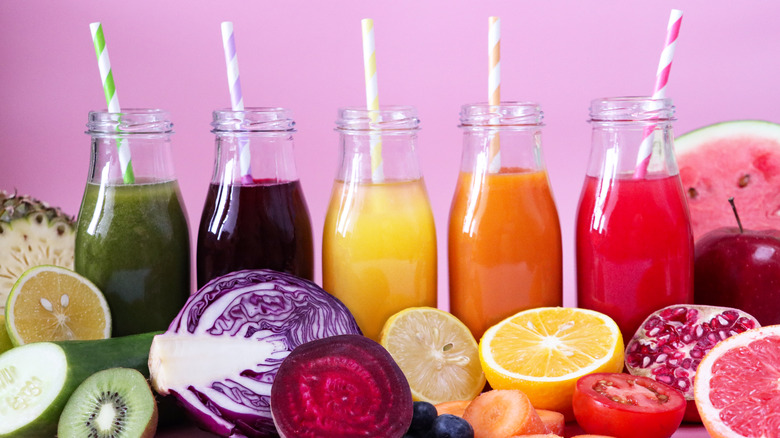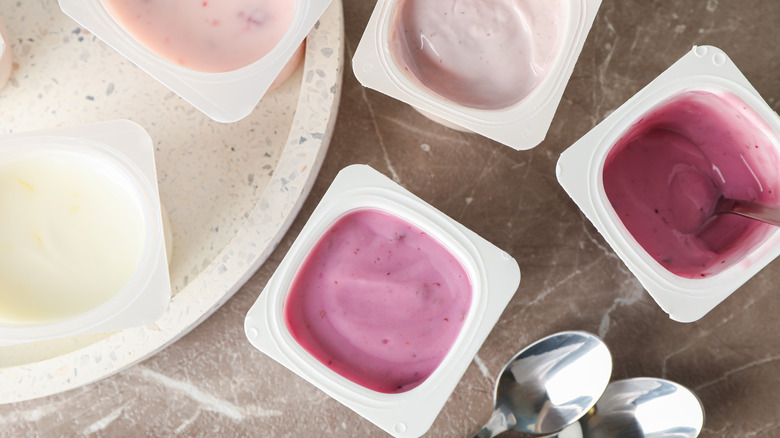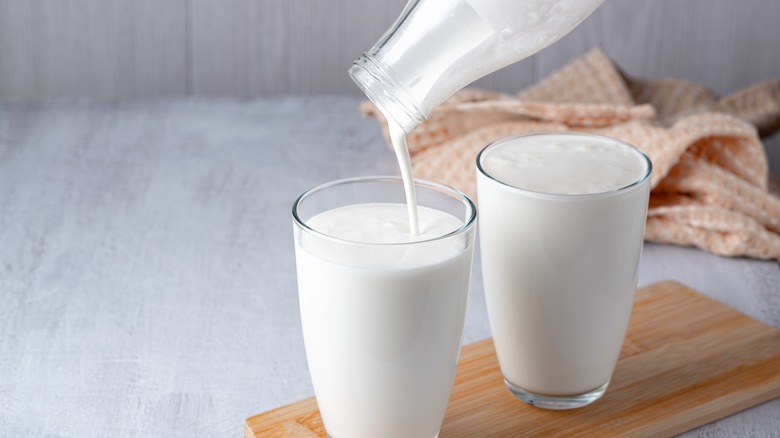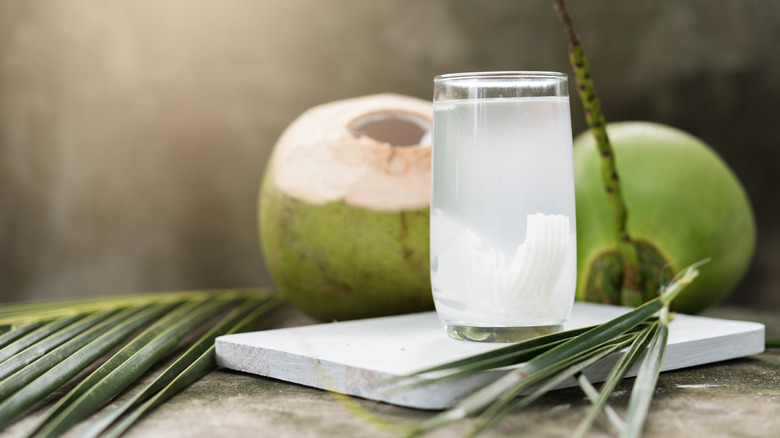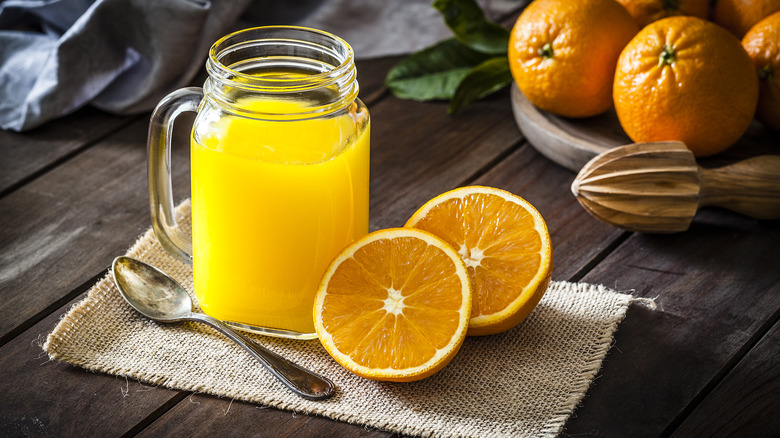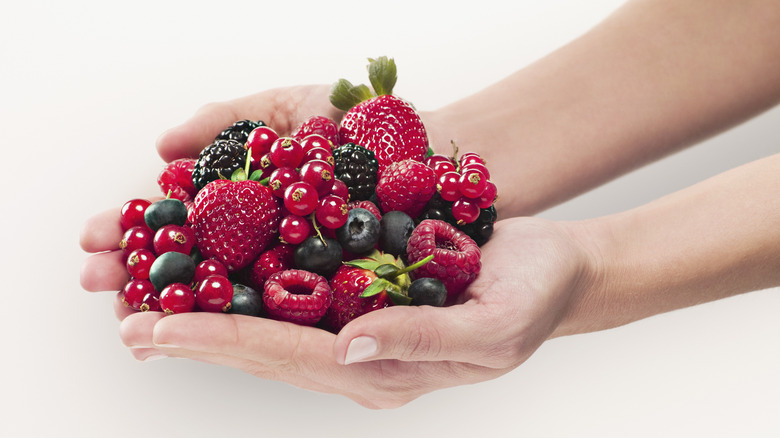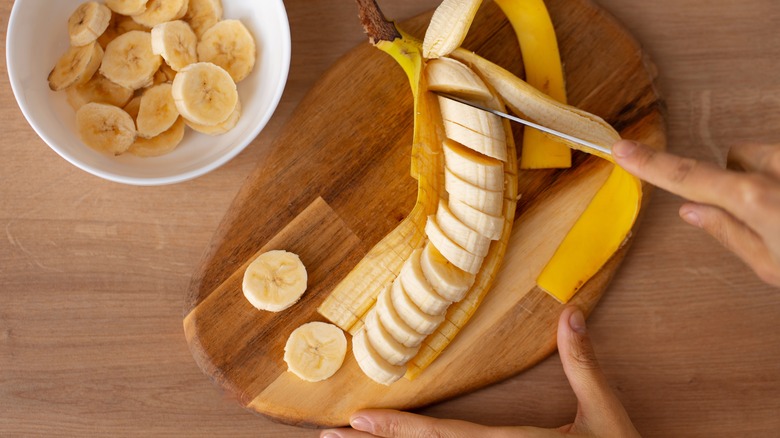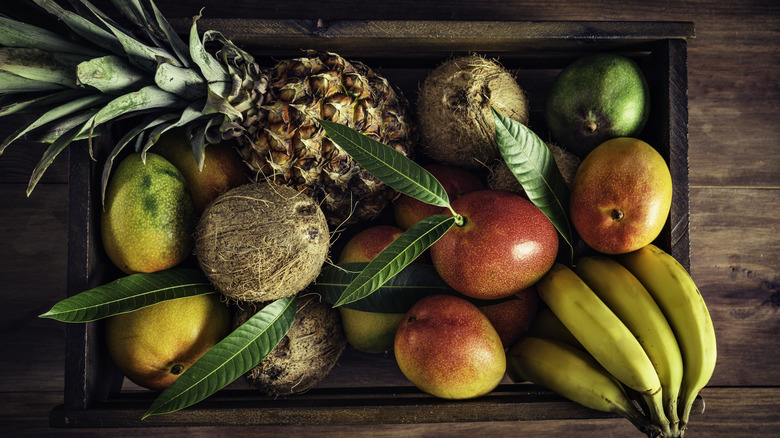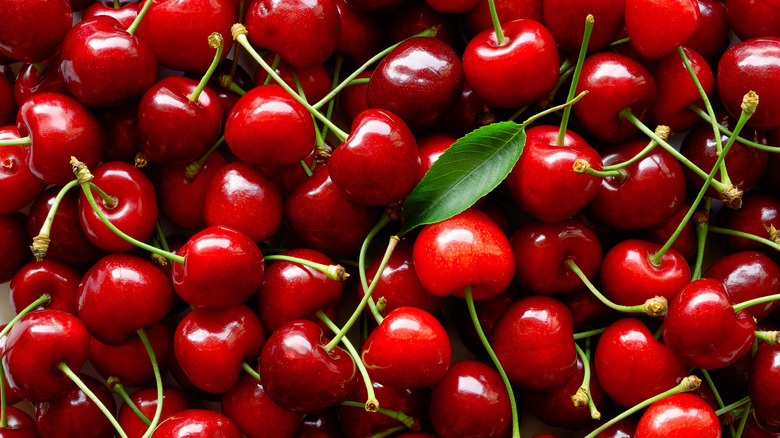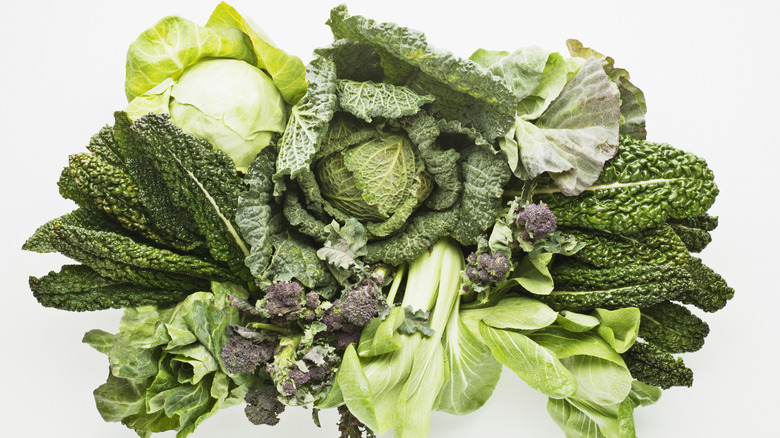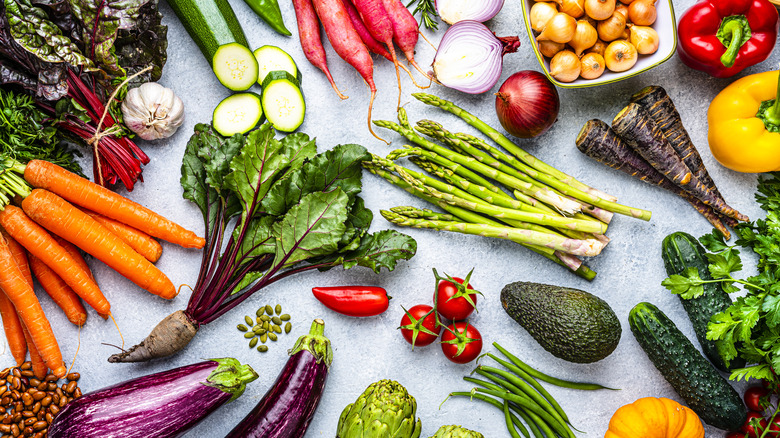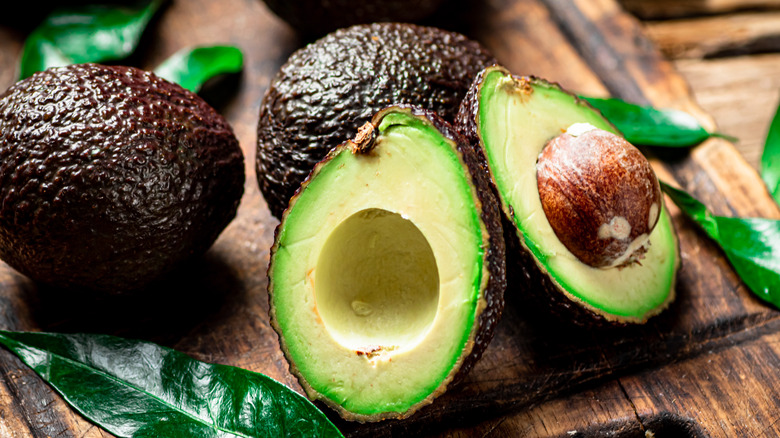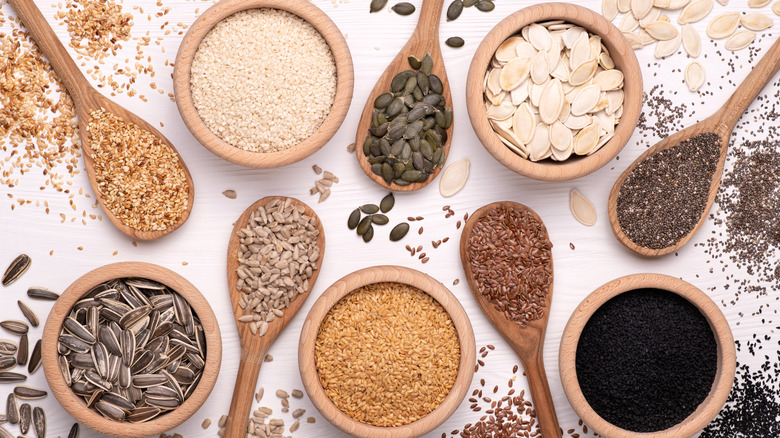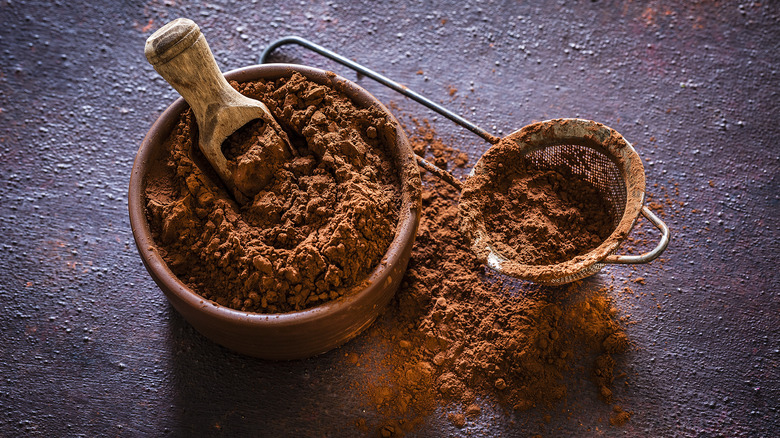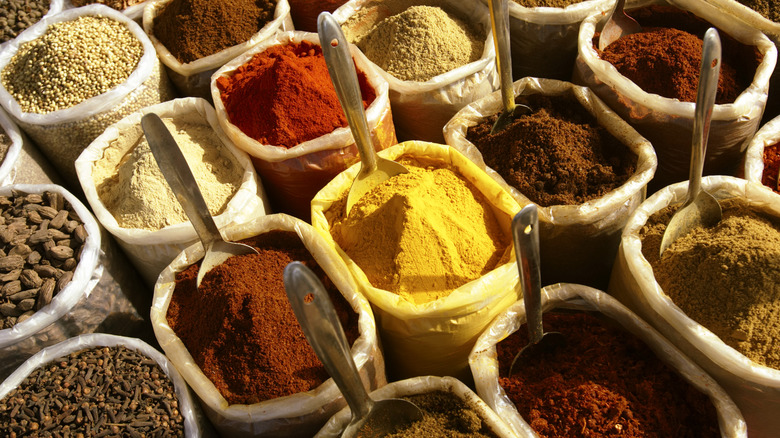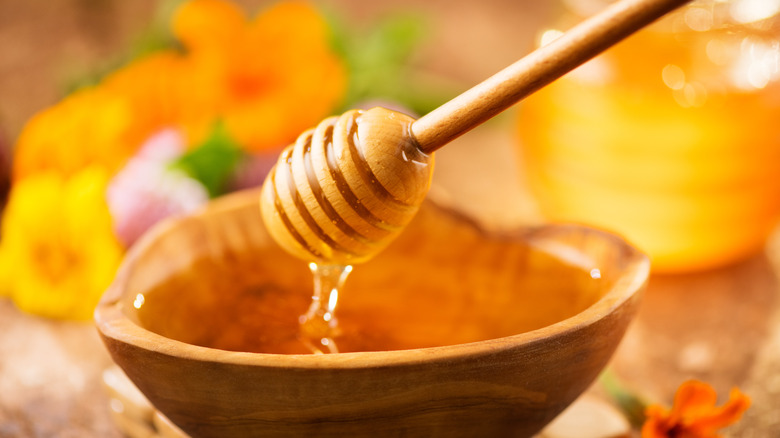19 Ingredients That Will Make Your Smoothies Even More Refreshing
Not only are smoothies incredibly refreshing, but they are also delicious and a great way to pack some essential nutrition into your day. With so many great reasons to drink smoothies, why not blend one up for breakfast, after your workout, as a healthy snack, or even for dessert?
To build a healthy smoothie, start out with a yogurt or liquid base, add fruit or veggies, and then get creative with other add-ins like nut butters, seeds, and flavorings. When choosing your ingredients, make sure to include multiple food groups and follow our expert tips for making a perfect smoothie. To save time, you may want to use pre-cut, frozen fruit.
Some of our favorite smoothies include berries, tropical fruits, spices, and even leafy greens — but when it comes to revitalizing combos, you do you! Below, we cover the most refreshing smoothie ingredients available to help keep you cool, well-hydrated, and properly nourished for summer.
1. Yogurt
Yogurt provides a creamy and nutritious smoothie base that pairs well with many different fruits and vegetables. While plain Greek yogurt is probably our fav, just about any type of yogurt can be used.
Consuming yogurt offers several important health benefits, according to Medical News Today. Although nutritional content varies between products, yogurt tends to be high in calcium, which supports bone health. It can also be rich in probiotics, aiding digestion. Some types of yogurt, including Greek yogurt, are good sources of protein. Finally, many yogurts are high in vitamins B6 and B12, as well as riboflavin, potassium, and magnesium.
When selecting your yogurt product, avoid those with an excessive amount of added sugar. Since plain yogurt varieties work perfectly fine in smoothies — you can always sweeten them up with fruit —there is no need to purchase sugar-laden flavors. If inspired, make homemade yogurt with whole milk and a small amount of store-bought starter yogurt.
2. Kefir
Similar to yogurt, kefir is another invigorating dairy product that provides a cool and creamy base for smoothies. Kefir is usually sold in drinkable form, possessing a somewhat tangier, more sour taste than yogurt. (But don't worry — this can easily be balanced with fruit, flavorings, or other add-ins.)
Kefir contains many important nutrients and offers several notable health benefits (per Healthline). Since making kefir involves multiple fermentation processes, the resulting product contains even more probiotics than yogurt; some of these probiotics may contain antibacterial properties to help prevent infection. Additionally, kefir is an excellent source of calcium, which strengthens bones. There is also some evidence that kefir may inhibit tumor growth and reduce the risk of cancer.
One point of clarification: Water kefir (or fruit kefir) is very different from dairy kefir, described above. Although not common in the U.S., the term "kefir" can be used to describe a light, soda-like, probiotic drink in other parts of the world (like France).
3. Coconut water and coconut meat
For an especially revitalizing smoothie, just add coconut water and/or coconut meat. Unsweetened coconut water is a natural source of electrolytes that will go a long way to keeping you hydrated without any of the added sugar, artificial flavorings, and excess calories found in so many sports drinks. Plus, coconut water is rich in potassium, an important nutrient that most people could use more of (via Cleveland Clinic). Just take care not to overdo it, since drinking too much coconut water can have an unfortunate laxative effect.
Adding chunks of fresh coconut meat (or dried, unsweetened shredded coconut) is another good way to quench your thirst and upgrade your smoothie. This works especially well in combination with tropical fruits like pineapple, mango, and banana. By the way, if you want to crack open a whole coconut, whack it hard against something solid. Or, for a smoother cut, use a handheld saw. If you don't plan on using the entire fruit in your smoothie, check out our creative ways to use a whole coconut.
4. Milk (dairy or plant-based alternative)
For a creamy, refreshing smoothie, we recommend pouring some milk into that blender of yours. Not only will this enhance the taste and texture of your smoothie, but it will also likely benefit your health. The USDA recommends consuming 3 cups of dairy milk (or other dairy products) per day. While you are probably already aware that drinking milk can help build stronger bones and teeth, did you know that it may also impact blood pressure, cardiovascular health, and even cancer risk (via Harvard Health)?
Those who can't tolerate milk or are concerned about the environmental toll of dairy on the planet may wish to substitute dairy milk with a calcium-enriched, plant-based alternative. There are many types of plant-based milks available, including soy, almond, rice, coconut, and oat. Since nutritional content can vary widely by category, brand, and even specific product, be sure to pay close attention to labels when making your selection.
5. Juice
Who doesn't love a restorative glass of juice? Juice can also be used as a smoothie base, although we suggest choosing your juice wisely. For one thing, avoid juice-like drinks, which can contain more sugar and empty calories than actual juice. Instead, select 100% fruit or vegetable juices.
Our favorite orange juice brand is Naked, which contains 100% orange juice and no added sugar. If you prefer an apple variety, consider using apple cider vs apple juice. While the two are nutritionally similar, apple cider is less processed and therefore contains more polyphenols (a compound found naturally in apples that may help prevent cancer).
WebMD names vegetable juice the best option from a nutritional perspective, with pomegranate and cranberry juices also being good choices. An even better option would be to blend in whole fruits and vegetables for an extra refreshing (and nutritiously superior) kick. Further down, we cover all of our favorite fruits and veggies for smoothies.
6. Coffee
If you're after a refreshing beverage, then steaming hot coffee may not be it. However, there's absolutely no reason why you can't turn cooled coffee into an icy smoothie. This will allow you to enjoy all of the same caffeinated zing, but now in a summer-like venue. The only catch is the need to plan ahead on this one since you should never place hot coffee directly into a blender.
Along those lines, the easiest way to make iced coffee is to brew regular coffee the night before and cool it in the refrigerator overnight. Another option perfect for frozen coffee smoothies is to pre-make ice cubes from brewed coffee. (Just remember to cool your coffee before pouring it into ice cube trays.) Once your coffee cubes are frozen, toss a handful into the blender, along with your other chosen smoothie ingredients. If you like your coffee sweet, stir in flavored syrups or sweetened condensed milk before placing coffee cube trays in the freezer.
7. Ice
Speaking of ice cubes, many people think that an icy element is essential to smoothies. While we do agree that including ice adds volume, texture, and a delightful sense of coolness to any smoothie recipe, we also think that the right blend of non-frozen ingredients works pretty well, too. For example, plain Greek yogurt + coconut water + strawberries + banana = no ice required. (Then again, we probably wouldn't say no to using frozen fruit for this one, either.)
The bottom line: There's really no right or wrong when it comes to including ice in smoothies. But if you don't have a specialty blender, you may want to avoid ice (or frozen fruit) as it can break or damage the blender blades. If you like the convenience of using frozen fruit but don't want to risk your blender, let it thaw before blending. Whether you decide to use ice or not, be aware that the order you put ingredients into a blender matters.
8. Berries
There are so many great reasons to add berries to smoothies. Not only are they incredibly replenishing, but berries are also one of the healthiest foods to eat. According to Healthline, berries are chock full of fiber, rich in antioxidants, and can help control blood sugar levels. They also help fight inflammation. To experience our favorite berry smoothie creations, blend up a Strawberry Banana Oatmeal Smoothie, Avocado Blueberry Smoothie, and Strawberry Cinnamon Smoothie.
To keep strawberries, blueberries, and raspberries fresh for longer, store them in the fridge and don't wash them until immediately before consuming. Alternatively, you can wash, dry, and freeze excess berries for later use. Be sure to freeze individual berries on wax paper (or a baking sheet) in a single layer, transfer to ziploc bags or airtight containers, and then grab them for later smoothie use. Oh, and don't miss our refreshing berry recipes the next time you feel like baking.
9. Banana
Bananas are a classic smoothie staple. They add sweetness, a smooth texture, and plenty of important nutrients. Plus, they are wonderfully restorative and go well with just about any other smoothie add-in. We also think adding bananas to smoothies is an excellent way to use up overripe bananas — especially when it's too hot to turn on the oven to bake banana bread.
Of course, you can always freeze ripe bananas before they go bad. In fact, frozen bananas are another fabulous addition to smoothies. The best way to freeze bananas is to peel and slice them into 1 or 2-inch pieces when they are slightly overripe, and then freeze these pieces individually on a tray so that they don't stick together.
Whether you go with fresh or frozen bananas, you will experience their many health benefits. Bananas contain plenty of potassium, fiber, and other essential vitamins and minerals (via WebMD), so eating them regularly can reduce your risk of stroke, keep bones and muscles healthy, and even prevent kidney stones. Eating bananas can also help control cholesterol levels and blood pressure.
10. Tropical fruits
There is no smoothie quite as rejuvenating as one made from tropical fruits. These prized fruits are typically grown in warm, tropical climates like those found in Hawaii, parts of Mexico, the Caribbean, and other areas near the equator.
Recently, we ranked a number of tropical fruits to determine our absolute favorites. These include passion fruit, pomegranate, tamarind, mango, and chayote. However, there are many more options to choose from. We wouldn't hesitate to toss in some papaya, guava, pineapple, and/or (obviously) banana to create even more smoothie magic.
Kiwi is another tasty addition to smoothies, though is not actually a tropical fruit. Also known as Chinese gooseberry, kiwi is a subtropical fruit that is native to China. (New Zealand is now the world's largest producer.) Although most people prefer to peel kiwi fruit, it is considered safe to eat the entire kiwi –– seeds, skin, and all. The skin is an excellent source of fiber.
11. Pit fruit
Ah, summertime. This is the best time of year to find fresh pit fruit, also known as stone fruit. Some of our favorite varieties for smoothies include cherries, peaches, nectarines, apricots, and plums. Lychee, another refreshing treat, can be difficult to find but is well worth the effort. We strongly recommend playing around with pit fruits to discover your favorite smoothie combo.
You can save yourself some hassle by purchasing pre-pitted, frozen fruit. This is especially helpful when it comes to cherries since pitting these small fruits can be messy and time-consuming. If you don't mind the process, you may wish to use fresh cherries (and other pit fruit) for something extra special.
To pick out the best fresh cherries, look for plump fruit with vibrant color and unblemished skin. To find sweet cherries, head to the farmer's market or grocery store between May and August. For sour cherries, be on the lookout between late June and early July.
12. Leafy greens
Although green smoothies may not be for everyone, adding leafy greens to the mix can boost your nutritional intake and benefit your health. Easy-to-find leafy greens include salad greens, kale, spinach, broccoli, bok choy, collards, mustard greens, turnip greens, and chard. Leafy greens are rich in many important vitamins, including folate. Folate can boost heart health and prevent birth defects (per USDA). Leafy greens also contain lots of antioxidants, which may reduce the risk of cancer and heart disease.
If you're feeling unsure about adding greens to your smoothie, we recommend starting out with a small handful of spinach. Kale is another good option for beginners. Either way, be sure to sweeten your green smoothie with lots of fresh fruit. Pineapple and blueberries are both great options — but just about any type of fruit will work. While it may take some experimentation, we think you'll be surprised at how good green smoothies can taste. Blend away!
13. Other veggies
When it comes to choosing veggies for smoothies, there are two main options: raw or cooked. Generally speaking, raw veggies, including cucumber, carrots, celery, and (of course) leafy greens, are incredibly refreshing and hydrating. Cucumber, for instance, contains so much water that you may be able to use it to replace liquids in your smoothie.
If raw veggies aren't your thing, try experimenting with cooked vegetables like sweet potato, zucchini, and butternut squash. While this may seem further off the beaten path, you may be pleasantly surprised at the outcome.
You may also want to consider adding beets to smoothies — but the funny thing about beets is that most people either love them or hate them! If you didn't just have a knee-jerk reaction of revulsion to the concept, experience the earthy flavor and vibrant appearance of a beet-infused smoothie. Plus, beets are nutritional powerhouses, packed with antioxidants, vitamin C, iron, and potassium.
14. Avocado
Avocado is a surprisingly creamy and nutritious addition to smoothies. But the trick to making an especially good avocado smoothie is in choosing perfectly ripe fruit (that's right, avocados are a fruit) which isn't always easy. Before heading to the store, check out our tips for picking and buying avocados. If you are in search of Haas avocados, for example, choose ones with very dark green, brown, or purple skin. Then, give each one a gentle squeeze, testing for firmness. If the avocado feels mushy, it is probably overripe. (That's not necessarily a bad thing for smoothies!) If it's too solid, your avocado likely needs time to ripen.
Not only can avocado liven up your smoothie, but eating avocado can benefit your health. Most notably, avocados may reduce the risk of developing cardiovascular disease and coronary artery disease. If that's not a good enough reason to load up your blender with avocado, then we don't know what is!
15. Seeds
You can also add vital texture, flavor, and nutrition to your smoothie with seeds. Some of the most rejuvenating options include flaxseeds, chia seeds, and hemp seeds (per Healthline). Flaxseeds (also called linseeds) provide dietary fiber, omega-3 fats, and antioxidants. Eating them may reduce your risk for diabetes, heart disease, and cancer. Chia seeds offer very similar health benefits as flax seeds and may also help reduce appetite. Hemp seeds provide a good source of vegetarian protein, along with essential amino acids. Given that all three nutritional powerhouses are easy to add to smoothies, what are you waiting for?
If you are wondering how else to include more seeds in your diet, the answer is simple: Cook with them! Along with using flax, chia, and hemp seeds, try adding sesame, poppy, pumpkin, sunflower, and caraway seeds to your culinary creations. Also, did you know that quinoa is a seed? Simply boil some in water for a healthy alternative to rice or pasta, or toast in a pan for a crunchy salad or oatmeal topper.
16. Unsweetened cocoa powder
Are you a chocolate lover? While some people think of fruit smoothies as the most refreshing type, there's really no reason why you can't also indulge your inner chocoholic. Here's the perfect way to make healthy chocolate smoothies: Blend unsweetened cocoa powder with plain yogurt or milk, peanut butter, and bananas. For an even more refreshing and decadent treat (think: chocolate milkshake), be sure to add ice. Then, all you will need to do is sip away. Guilt-free.
Alternatively, break out those frozen cherries and make our healthy Black Forest smoothie. This incredible combo also involves bananas, spinach, milk (or a milk alternative), ground flaxseed, and honey. If you want to get extra fancy, go ahead and sprinkle a chopped cherry on top, along with a dash of cocoa powder (or grated chocolate). While you are welcome to make this smoothie at any time of day, it makes for a supremely satisfying summer dessert. Mmm-mmm.
17. Extracts
Adding extracts to smoothies is a great way to boost flavor without changing any base ingredients or adding extra calories. In particular, we have found that vanilla extract, the most common option around, is an incredibly versatile extract since it goes with just about every type of smoothie ingredient. Our main advice here is to make sure you are using real vanilla extract and not the imitation kind. Some of our favorite vanilla extract brands include Nielsen-Massey, Penzey's, and King Arthur Baking Company — but if you can't find any of these near you, look for McCormick or Simply Organic. It is also possible to make homemade vanilla extract.
While vanilla is a classic option, keep in mind that there are many types of flavor extracts available. Some of these include almond, coconut, lemon, peppermint, banana, maple, and orange — so play around a little to determine your preferences. You should also know that when it comes to extracts, a little bit can go a long way. Especially with peppermint extract! (We speak from experience.)
18. Spices
Although traditional baking spices like cinnamon, nutmeg, and pumpkin pie spice are extremely comforting in pies, quick breads, and cookies, you may find that "hot" spices like ginger, cardamom, turmeric, cumin, and cayenne pepper offer a more rejuvenating effect when it comes to smoothies. Let's just say that we like to go wild with spices that really wake us up.
Fresh ginger makes for an especially revitalizing addition to smoothies. Although you can peel ginger, chop it up, and place it directly in the blender, our make-ahead ginger root wellness shots can save you time and add a cooling element. To prepare, all you need is fresh ginger root, lemons, and an ice cube tray. After your wellness shots are frozen, it is easy to pop one (or more) into the blender, along with your other favorite smoothie ingredients. We recommend including a sweetener (note: fruit works!) to balance out any sourness from the lemons.
19. Honey
While not every smoothie requires an added sweetener, some do. For instance, a smoothie made from fruit that is not at the peak of its ripeness may not be especially sweet. In such cases, go ahead and add a drizzle of honey.
Although we often think of honey as liquid gold, honey is actually the result of a chemical process that occurs inside bees. As bees travel from one plant to the next, they collect nectar. The nectar interacts with enzymes in the bees' salivary glands, changing into simple sugar. Then, the bees — well, they actually regurgitate the result into a honeycomb. (Gotta love nature!) There, water evaporates from the honey and it becomes ready for harvesting.
If that doesn't sound especially refreshing to you, we get it. But once you try a sip of your honey-sweetened smoothie, you're going to have a change of heart. Not sure which type of honey to use? From wildflower and clover to Manuka and macadamia, there are many varieties of honey out there to choose from. The good news is that you are unlikely to go wrong with any of them.
